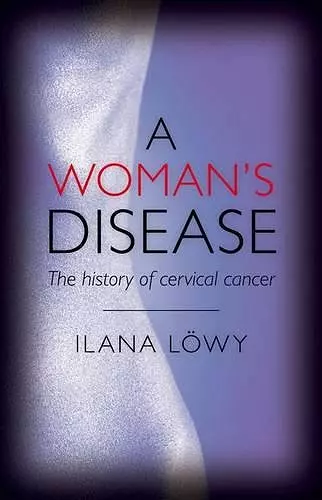A Woman's Disease
The history of cervical cancer
Format:Hardback
Publisher:Oxford University Press
Published:10th Nov '11
Currently unavailable, and unfortunately no date known when it will be back

Cervical cancer is an emotive disease with multiple connotations. It has stood for the horror of cancer, the curse of femininity, the hope of cutting-edge medical technologies and the promise of screening for malignant tumours. For a long time, this disease was identified with the most dreaded aspects of malignancies: prolonged invalidity and chronic pain, but also physical degradation, shame and social isolation. Cervical cancer displayed in parallel the dangers of being a woman. In the 20th century, innovations initially developed to control cervical cancer - radiotherapy and radium therapy, exfoliate cytology (Pap smear), homogenisation of the 'staging' of tumours, mass campaigns for an early detection of precancerous lesions of the cervix - set standards for diagnosis, treatment and prevention of other malignancies. In the late 20th century, cervical cancer underwent another important change. With the display of the role of selected strands of HPV (Human Papilloma Virus) in the genesis of this malignancy, it was transformed into a sexually transmitted disease. This new understanding of cervical cancer linked it more firmly with lifestyle choices, and thus increased the danger of stigmatisation of patients; on the other hand it opened the possibility for efficient prevention of this malignancy through vaccination. Ilana Lowy follows the disease from antiquity to the 21st century, focussing on the period since the mid-19th century, during which cervical cancer was dissociated from other gynaecological disorders and became a distinct entity. Following the ways in which new developments in science, medicine, and society have affected beliefs about medical progress and an individual's responsibility, gender roles, reproduction, and sex, Lowy demonstrates our understanding of what cervical cancer is, and how it can be prevented and cured.
The book is an easy to read, historical account of the advances in diagnosis, treatment and prevention of cervical cancer and the change in society's attitudes toward this disease. It is well referenced and the chapters are arranged in a logical sequence. I would recommend the book for those who have an interest in the history of women's health and gynaecological cancer. It would have appeal to both health professionals and avid readers without a healthcare background. By example, my mother started reading this book and would like it back when I have finished! * Taryn Robinson, Department of Gynaecological Oncology, Peter MacCallum Cancer Centre, Victoria *
ISBN: 9780199548811
Dimensions: 204mm x 138mm x 25mm
Weight: 356g
240 pages